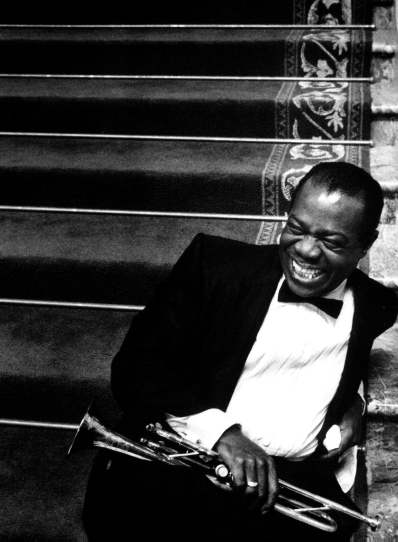 What makes Pops: A Life of Louis Armstrong different from all previous Armstrong biographies? When talking about Pops with interviewers, I usually stress that I’m the first biographer to have had access to the 650 reel-to-reel tapes that Armstrong made during the last quarter-century of his life, many of which contain astonishingly candid recordings of his private after-hours conversations. I also try to work in the fact that I’m the first trained musician ever to have written a fully sourced biography of Armstrong.
What makes Pops: A Life of Louis Armstrong different from all previous Armstrong biographies? When talking about Pops with interviewers, I usually stress that I’m the first biographer to have had access to the 650 reel-to-reel tapes that Armstrong made during the last quarter-century of his life, many of which contain astonishingly candid recordings of his private after-hours conversations. I also try to work in the fact that I’m the first trained musician ever to have written a fully sourced biography of Armstrong.
In addition to these two things, though, there’s another important point that I sometimes forget to make. I’ve written about it in this space, but I think it’s worth repeating, both here and in the future.
To put it as simply as possible, I’ve sought to write a narrative biography of Louis Armstrong that is comparable in seriousness, scope, and literary quality to a “definitive” high-culture biography of a great novelist–or a great classical composer. Very few popular-music biographies have aspired to that kind of standard, but it seems obvious to me that Satchmo was a figure of comparable artistic and cultural significance, and deserves to be written about in the same way.
If anybody asks you why they should go out and buy a copy of Pops, that’s what you should tell them.
